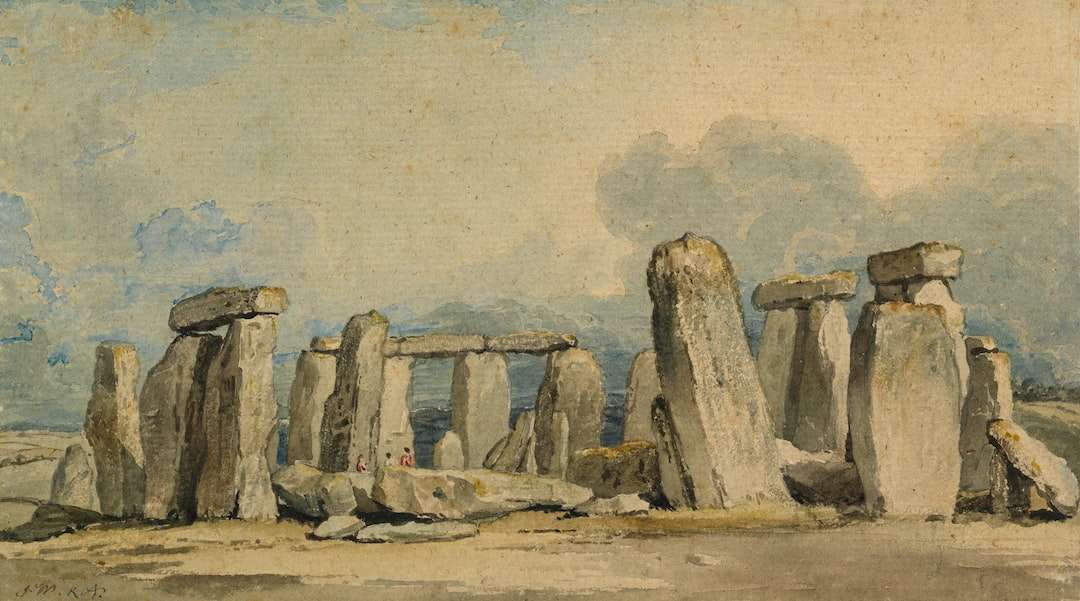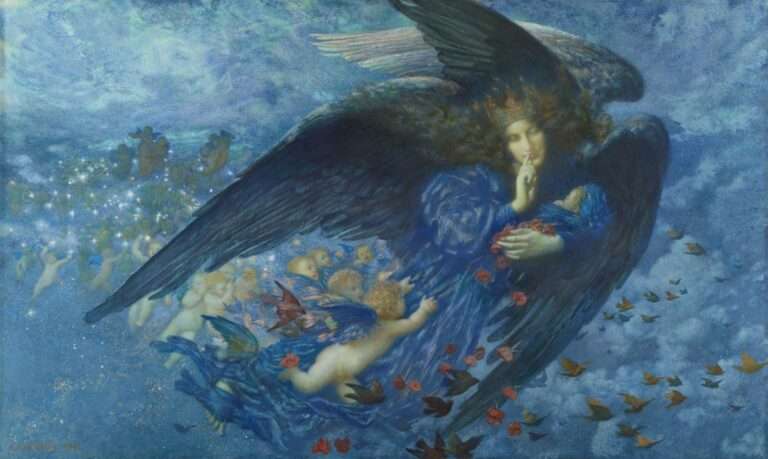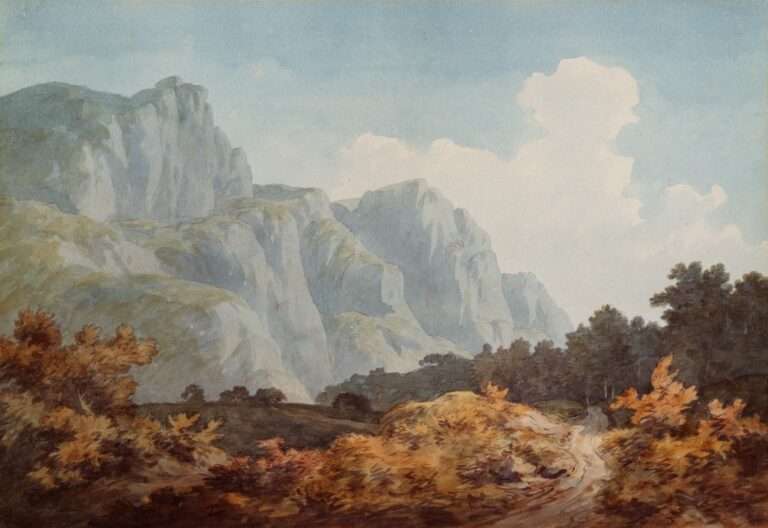Exploring the Beauty of Romanticism Symbolism in Art: A Journey Through Time

Romanticism Symbolism in art is a movement that emerged during the Romanticism period in the late 18th and early 19th centuries. It is characterized by its emphasis on emotion, imagination, and the use of symbolism to convey deeper meanings and messages. Understanding the origins and impact of Romanticism Symbolism is crucial in appreciating its significance in art history and its influence on contemporary art.
The Origins of Romanticism Symbolism in Art
The Romanticism movement originated in Europe as a reaction against the rationality and order of the Enlightenment period. It was a time of political and social upheaval, with revolutions and wars taking place across the continent. Artists during this period sought to express their emotions and individuality through their work, rejecting the strict rules and conventions of academic art.
Symbolism emerged as a prominent artistic style during the Romanticism period. Artists began to use symbols and allegories to convey deeper meanings and emotions in their work. They believed that art should evoke an emotional response from the viewer, rather than simply imitating reality. This emphasis on symbolism allowed artists to explore complex themes and ideas that went beyond the surface level.
The Role of Emotion and Imagination in Romanticism Symbolism
One of the key characteristics of Romanticism Symbolism is its emphasis on emotion and imagination. Artists during this period believed that emotions were a powerful force that could inspire creativity and artistic expression. They sought to capture the intensity of human emotions in their work, often using dramatic and exaggerated gestures, colors, and compositions.
Imagination played a crucial role in Romanticism Symbolism as well. Artists used their imagination to create fantastical worlds, mythical creatures, and dreamlike landscapes. They believed that imagination was a gateway to a higher truth, allowing them to explore deeper aspects of human existence.
The Influence of Nature and the Supernatural in Romanticism Symbolism
Nature and the supernatural were important themes in Romanticism Symbolism. Artists during this period celebrated the beauty and power of nature, often depicting landscapes and natural scenes in their work. They believed that nature was a source of inspiration and a reflection of the divine.
The supernatural also played a significant role in Romanticism Symbolism. Artists were fascinated by the mystical and the unknown, often incorporating supernatural elements into their work. They believed that the supernatural could reveal hidden truths and mysteries about the human experience.
The Relationship Between Romanticism Symbolism and Realism
Romanticism Symbolism and Realism were two contrasting art movements that emerged during the 19th century. While Romanticism Symbolism emphasized imagination, emotion, and symbolism, Realism focused on depicting the world as it is, without idealization or embellishment.
Despite their differences, Romanticism Symbolism had a significant influence on the Realism movement. Realist artists were inspired by the emotional intensity and expressive power of Romanticism Symbolism. They sought to capture the reality of everyday life, but also wanted to evoke an emotional response from the viewer.
The Use of Color and Light in Romanticism Symbolism

Color and light were important elements in Romanticism Symbolism. Artists used color symbolically to convey emotions and ideas. For example, warm colors such as red and orange were often used to represent passion and intensity, while cool colors such as blue and green were used to evoke a sense of calmness or melancholy.
Light was also used symbolically in Romanticism Symbolism. Artists often depicted scenes with dramatic lighting, using light and shadow to create a sense of depth and atmosphere. Light was seen as a metaphor for enlightenment and spiritual illumination.
The Symbolism of Mythology and Folklore in Romanticism Art
Mythology and folklore played a significant role in Romanticism Symbolism. Artists during this period drew inspiration from ancient myths and legends, using them as a source of symbolism and allegory. They believed that mythology and folklore contained universal truths and archetypal symbols that could be used to convey deeper meanings and messages.
Symbolism was used to convey these deeper meanings in Romanticism art. Artists would often incorporate symbolic elements from mythology and folklore into their work, such as mythical creatures, gods and goddesses, or symbolic objects. These symbols were used to represent abstract concepts or emotions, allowing the viewer to interpret the work on a deeper level.
The Impact of Romanticism Symbolism on Literature and Music
Romanticism Symbolism had a profound influence on literature and music during the Romanticism period. Writers and composers sought to capture the emotional intensity and imaginative power of Romanticism Symbolism in their works.
In literature, authors such as William Wordsworth, Samuel Taylor Coleridge, and Edgar Allan Poe used symbolism to convey deeper meanings and emotions in their poetry and prose. They drew inspiration from nature, the supernatural, and mythology, using symbols and allegories to explore complex themes and ideas.
In music, composers such as Ludwig van Beethoven, Franz Schubert, and Richard Wagner incorporated Romanticism Symbolism into their compositions. They used music to evoke emotions and create a sense of drama and intensity. The use of symbolism in music allowed composers to express abstract concepts and ideas that could not be conveyed through words alone.
The Evolution of Romanticism Symbolism in the 19th Century
Romanticism Symbolism underwent changes and developments during the 19th century. As the century progressed, artists began to experiment with new styles and techniques, pushing the boundaries of what was considered traditional Romanticism Symbolism.
The influence of other art movements also had an impact on Romanticism Symbolism during this time. For example, the Pre-Raphaelite Brotherhood in England drew inspiration from medieval art and literature, incorporating symbolism and allegory into their work. The Symbolist movement in France also emerged during this period, focusing on the use of symbols and metaphors to convey deeper meanings.
The Legacy of Romanticism Symbolism in Modern Art
The influence of Romanticism Symbolism can be seen in various modern art movements. Artists such as Gustav Klimt, Odilon Redon, and Edvard Munch incorporated elements of Romanticism Symbolism into their work, using symbolism and allegory to convey deeper meanings and emotions.
The Symbolist movement in the late 19th and early 20th centuries was heavily influenced by Romanticism Symbolism. Symbolist artists sought to express their inner thoughts and emotions through their work, often using symbols and metaphors to convey abstract concepts.
Rediscovering the Beauty of Romanticism Symbolism in Contemporary Art
In contemporary art, there has been a resurgence of interest in Romanticism Symbolism. Artists continue to explore the themes of emotion, imagination, and symbolism in their work, drawing inspiration from the Romanticism period.
Contemporary artists such as Anselm Kiefer, Marlene Dumas, and Bill Viola incorporate elements of Romanticism Symbolism into their work. They use symbolism and allegory to explore complex themes and ideas, creating works that evoke an emotional response from the viewer.
Romanticism Symbolism in art is a movement that emerged during the Romanticism period in the late 18th and early 19th centuries. It is characterized by its emphasis on emotion, imagination, and the use of symbolism to convey deeper meanings and messages. Understanding the origins and impact of Romanticism Symbolism is crucial in appreciating its significance in art history and its influence on contemporary art. From its origins in the Romanticism movement to its impact on literature, music, and other art forms, Romanticism Symbolism continues to be a powerful force in the art world. Its legacy can be seen in the works of contemporary artists who continue to explore the themes of emotion, imagination, and symbolism in their work.
If you’re interested in exploring the symbolism of animals in art, you might find this article on the symbolism of a snake fascinating. Snakes have long been associated with various meanings and interpretations, and understanding their symbolism can provide valuable insights into artworks influenced by Romanticism. To delve deeper into this topic, check out the article on symbolismhub.com.
FAQs
What is Romanticism Symbolism in Art?
Romanticism Symbolism in Art is a movement in art that emerged in the late 18th century and lasted until the mid-19th century. It is characterized by an emphasis on emotion, imagination, and individualism, as well as a fascination with nature, the supernatural, and the exotic.
What are the key features of Romanticism Symbolism in Art?
The key features of Romanticism Symbolism in Art include a focus on emotion and imagination, an interest in the supernatural and the exotic, a celebration of nature, and an emphasis on individualism and the subjective experience.
Who were some of the most famous Romanticism Symbolism artists?
Some of the most famous Romanticism Symbolism artists include William Blake, Francisco Goya, Caspar David Friedrich, Eugène Delacroix, and J.M.W. Turner.
What are some of the most famous works of Romanticism Symbolism art?
Some of the most famous works of Romanticism Symbolism art include William Blake’s “The Tyger,” Francisco Goya’s “The Third of May 1808,” Caspar David Friedrich’s “Wanderer Above the Sea of Fog,” Eugène Delacroix’s “Liberty Leading the People,” and J.M.W. Turner’s “The Slave Ship.”
What was the impact of Romanticism Symbolism on art?
The impact of Romanticism Symbolism on art was significant, as it marked a departure from the more rational and classical styles that had dominated art in the preceding centuries. It paved the way for later movements such as Symbolism and Surrealism, and its emphasis on emotion and individualism continues to influence artists today.





